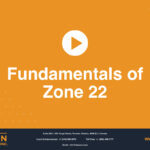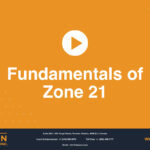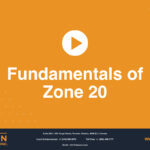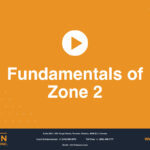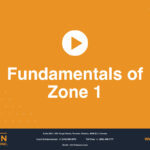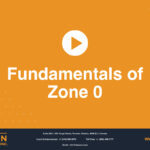Dust Explosive Atmospheres
Dust explosive atmospheres are locations that are hazardous due to the presence of combustible dusts. Small combustible dust particles can burn easily and rapidly. A sufficient quantity of them can cause an explosion.
In this animation we will review how combustible dusts and hazardous locations in which dusts are present are classified, how electrical devices are protected from hazardous environments containing dusts, and finally, how electrical devices are marked.
There are two classification systems: the Zone and Class/division systems. The Zone system is based on international Standards and the Class-division system only applies to North America. Let’s consider the classifications in the Zone system first.
Based on IEC international standards and the Zone classification system, explosive dusts are categorized as Group III. Group III is further defined as IIIC, metal dusts, IIIB, non-conductive dusts, and IIIA, combustible flyings and solid particles.
The presence of any of these three dust groups, alone or in combination, determines that a location is hazardous. Based on the likelihood of these explosive dust materials being present, there are three classified areas: Zone 20, Zone 21 and Zone 22.
Zone 20 identifies an area in which a cloud of combustible dust in air is present continuously, or for long periods or frequently for short periods.
Zone 21 refers to an explosive atmosphere in which a cloud of combustible dust in air is likely to occur occasionally in normal operation.
And Zone 22 identifies an explosive atmosphere in which a cloud of combustible dust in air is not likely to occur in normal operation but, if it does occur, will persist for only a short period.
In some environments, dust is an integral part of the manufacturing process; in these dust handling plants, dusts are kept inside a dust-tight container. We can use that scenario to explain the three Zones. The area inside the container of dust is defined as Zone 20, because dusts are always present. In our graphic, dust is allowed to drop from the container onto the conveyor below. The path taken by dust that is allowed to be released from the container when required, called a “primary grade of release”, creates a Zone 21 environment. Unintended leaks from an incorrectly fitted dust-tight container lid or accidental spillages, called a “secondary release, create a Zone 22 environment, as we can see in the graphic.
Electrical devices installed in any of these three areas must comply with the requirements for Zones 20, 21 and 22, respectively.
In the Class/division classification system, used only in North America, there are similarly three dust groups. Group E is defined as combustible metal dusts, Group F is combustible dust other than combustible metal dust, and Group G is solid particles, including fibres and flyings. All three groups are combustible.
Dusts in the Class-division system are all Class II hazardous locations. The quantities of dusts present, and the conditions in which they are present, combine to determine the Division of a given location.
Class II Division 1, known as C2D1, is a location in which combustible and explosive dusts are present in the air under normal operating conditions in quantities sufficient to produce explosive or ignitable mixtures.
Class II, Division 2, known as C2D2, is a place in which an explosive atmosphere, in the form of a cloud of combustible dust in air, is not likely to occur in normal operation but, if it does occur, will persist for a short period only.
Electrical equipment installed in any hazardous location must be used safely. Various approaches to protection are used in dust explosive atmospheres, including limiting the amount of energy of the ignition source, isolating the source of ignition, or preventing the ingress of dusts. One of the effective methods used to prevent an electrical circuit from becoming a source of ignition is through the use of a dust-tight enclosure where all of the joints or openings must be sealed or protected to keep dust out. Normally this is achieved through the use of proper gaskets or O-rings.
For the Zone system, protection techniques that may be used in Zones 20, 21 and 22 are Protection by Enclosure, Intrinsic Safety, Encapsulation, and Purging and Pressurization, but that last technique may only be used in Zones 21 and 22 locations.
Electrical devices to be installed in a Class II, division 1 location may use Intrinsic Safety, Purged and Pressurized Type X or Y, and Dust-tight/hermetically Sealed Enclosure protection techniques. Class II, Division 2 locations, by definition, needs less protection: they can use Dust-tight/hermetically Sealed Enclosures, Non-incendive, Purged and Pressurized Type Z, and also all the Class 2, Division 1 protection techniques.
Now let’s see how an electrical device is marked for use in a dust explosive atmosphere.
In the Zone system, a product’s marking is made up of 5 parts, as illustrated by this example:
Ex ta IIIC T125°C Da
“Ex” means explosion protected.
The next part of the marking indicates the specific method of protection used, “ta” in our example. “t” stands for Protection by Enclosure. The second letter of each protection technique, in our example, the “a”, refers to the degree of protection and therefore the Zone in which the product may be used. “a” means the product has been assessed for installation in Zone 20.
A marking of “b” is used when the device is safe to install in Zone 21 and a “c” for Zone 22.
The other possible protection techniques are “i”, which stands for Intrinsic Safety, “m” which means Encapsulation, and “p”, which means Purging and Pressurization. There are three variations on this marking: “pxb” for Zone 21, “pyb” again for Zone 21 and “pzc” for Zone 22.
The IIIC part of the marking indicates the type of hazard present in the environment where the device will be installed. Dusts in the Zone system are all in Group III, further defined as IIIC, IIIB or IIIA as we described earlier.
The next part of the marking indicates the Temperature code of the device.
Temperature code refers to the maximum temperature the electrical apparatus might attain, under normal operation or fault conditions, depending on the protection technique used. For dust explosive marking, Temperature code is shown as a temperature value in degrees Celsius. In our example, T125C shows the maximum temperature of this device is 125°C.
Note that in some cases, the marking might show a small subscript following the letter “T”, which indicates the layer depth of the dust. In our example, 200 means that the maximum temperature rise of 125°C is obtained based on a 200mm layer of dust on the equipment.
The final part of the marking adds detail to the assessed level of protection, the EPL. The assigned EPL takes into account all of the protection techniques used and indicates the likelihood that the equipment can become a source of ignition. The EPL of Da in our example means that the device can be installed in a Zone 20, 21 or 22 locations. An EPL of Db would dictate that the product can be installed in Zone 21 or Zone 22. An EPL of Dc means the product can only be installed in Zone 22.
A Class-Division marking has three main parts, as shown in this example:
Class II, Division 1 Groups E, F, G
The first part indicates the type of flammable material – Class II, which means dusts.
The second part, the Division, refers to the quantities of the explosive materials present and under what conditions. It can be Division 1 or Division 2. Our example is Division 1 as was explained earlier.
The third part of the marking is the dust Group. The marking must list all Groups that are acceptable. For instance, if a marking shows group F and G, it means this product is only acceptable where there are combustible dusts other than combustible metal dust.
Markings allow some devices to be installed in areas that have been classified using a different system. The Standards must be strictly followed in all cases.
In dust explosive areas in North America, products with Class II, Division 1 marking are permitted to be installed in North American Zones 20, 21, 22 areas. Products with Class 2, Division 2 marking are only allowed to be installed in the North American Zone 22. Only products with EPL Da can be installed in Class II, Division 1 areas. And the products that are approved for EPL Db and Dc in North America are permitted to be installed in Class II, Division 2 and not Class II, Division 1.
In the Zone classification system based on IEC standards, products with an EPL of Da are allowed to be installed in Zone 21 and Zone 22. And products approved for Zone 21 are allowed to be installed in Zones 21 and 22. But we should remember that products with EPL Dc are only allowed in Zone 22.
In summary, markings on electrical devices for use in hazardous locations convey very important details. No matter how complex the markings, when you understand what is meant by each portion, you can interpret them.
We hope you enjoyed this presentation. If you still have any questions, please ask the Hazcon team.
Request a Consultation
Complete the form below to get started.

